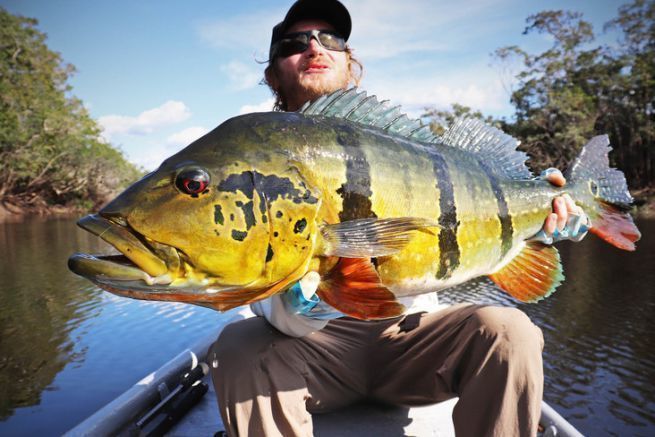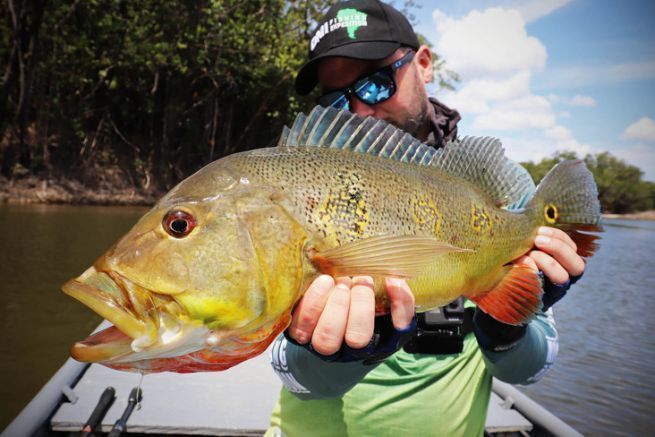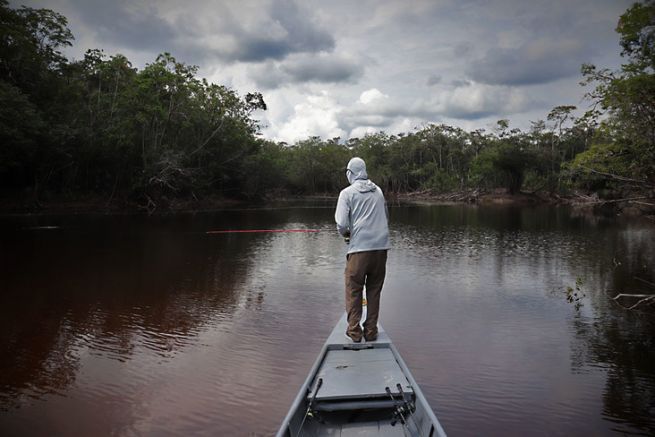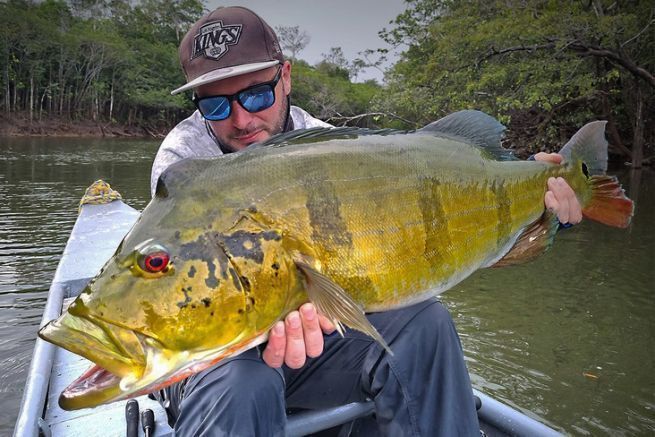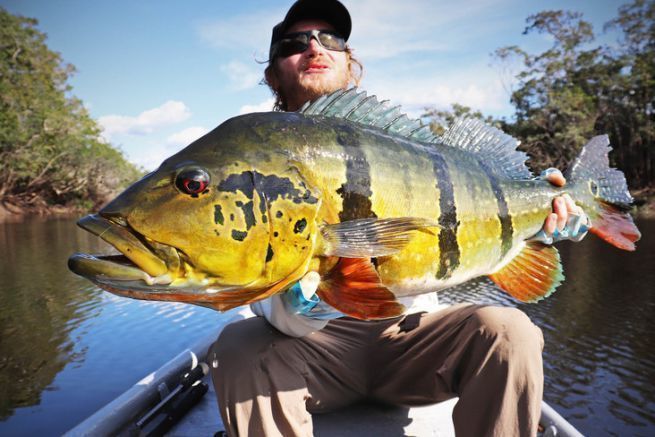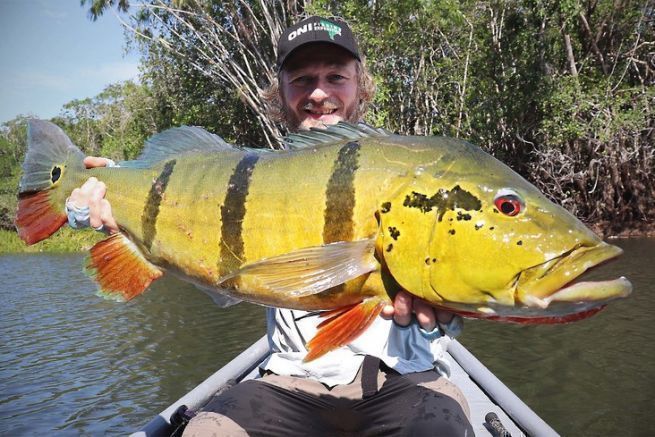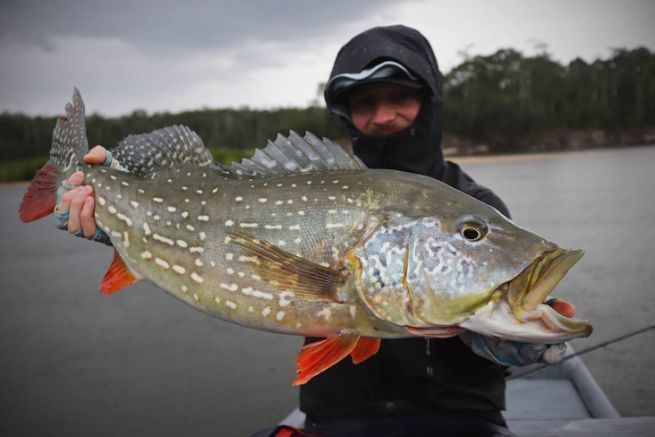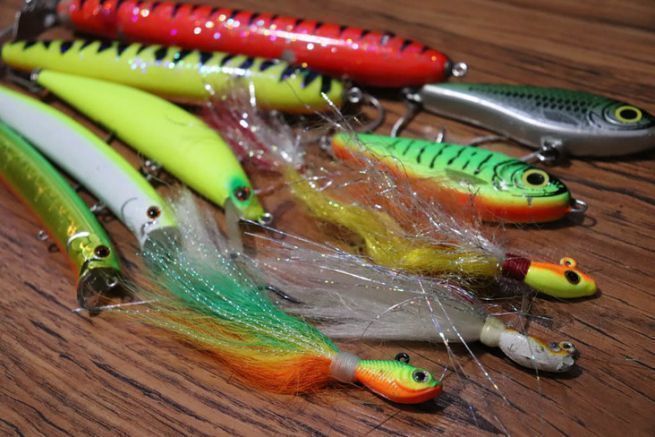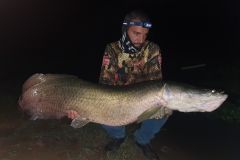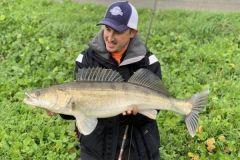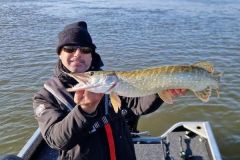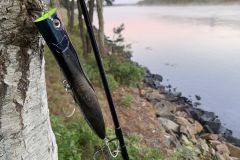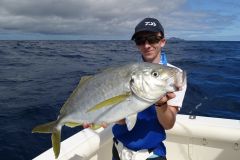For this fourth day of fishing, my partner and I are fishing mostly with minnow jerkbaits. We get a few big fish moving early in the day, but again, they just throw the lures away and don't bite.
However, the butterfly are very cooperative this morning, and the hits follow each other. This species is very combative and more abundant than tememsis, perfect to have fun while waiting for the big ones to show up.
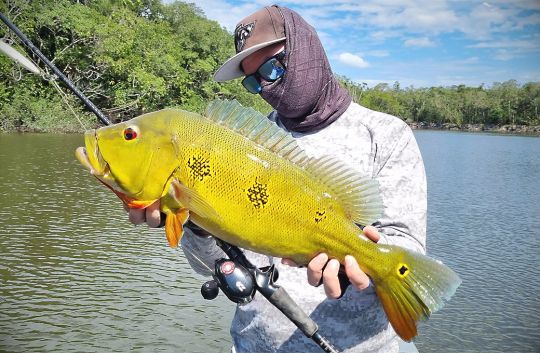
Double shot
At the end of the day, we arrived in a lagoon with a very small entrance. My partner made a very big male react, which was certainly watching the entrance of this lagoon. We entered the said lagoon and a few moments later, our guide spotted a group of small peacock bass, which meant that a parent was certainly not far.
Indeed, as explained in a previous article, big peacock bass have a very strong maternal instinct, but also a conjugal one, as they stay in couple. This protective behavior pushes them to scare away intruders, including other peacock bass. It can therefore be considered that there is only one couple that occupies each lagoon, except for the very large lagoons that can accommodate several couples. It may therefore be a good idea, when catching a large peacock bass, for the second angler to continue fishing, as the other partner is most probably in the area.
Following this observation, my partner takes the time to change rod to throw a bucktail jig. The reaction is not long in coming and here he is harnessed to a beautiful specimen.
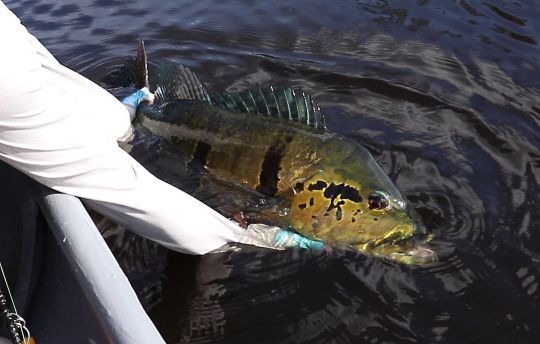
Mastering the fight
The big peacock bass start their fight with a very big rush of 10 to 20 meters, then it is possible to bring them back to the boat in one go. From here the fish will make other powerful but not long rushes, around 2 to 5 meters. The fight is thus short, but very intense and favourable to the stalls, because of the sudden accelerations.
You have to be able to balance between bringing the fish back, giving it some freedom to avoid stalling, and above all avoiding it jumping out of the water. When you feel the fish coming to the surface, you must release the pressure on it so that it does not jump. If the fish jumps, you must stop pulling and lower the rod towards it, which gives slack in the line and increases the likelihood that the hook will remain pricked, when the fish shakes its head.

To catch the fish, it is possible to catch it by the mouth, as with a black-bass, or to use a Bogagrip type of pliers. In both cases, you must support its weight with the other hand.
Debriefing of the day
For my part, my day was summed up by the catch of a good quantity of peacock bass butterfly. My partner, as for him, succeeded in catching a big peacock bass at the end of the day.

 /
/ 